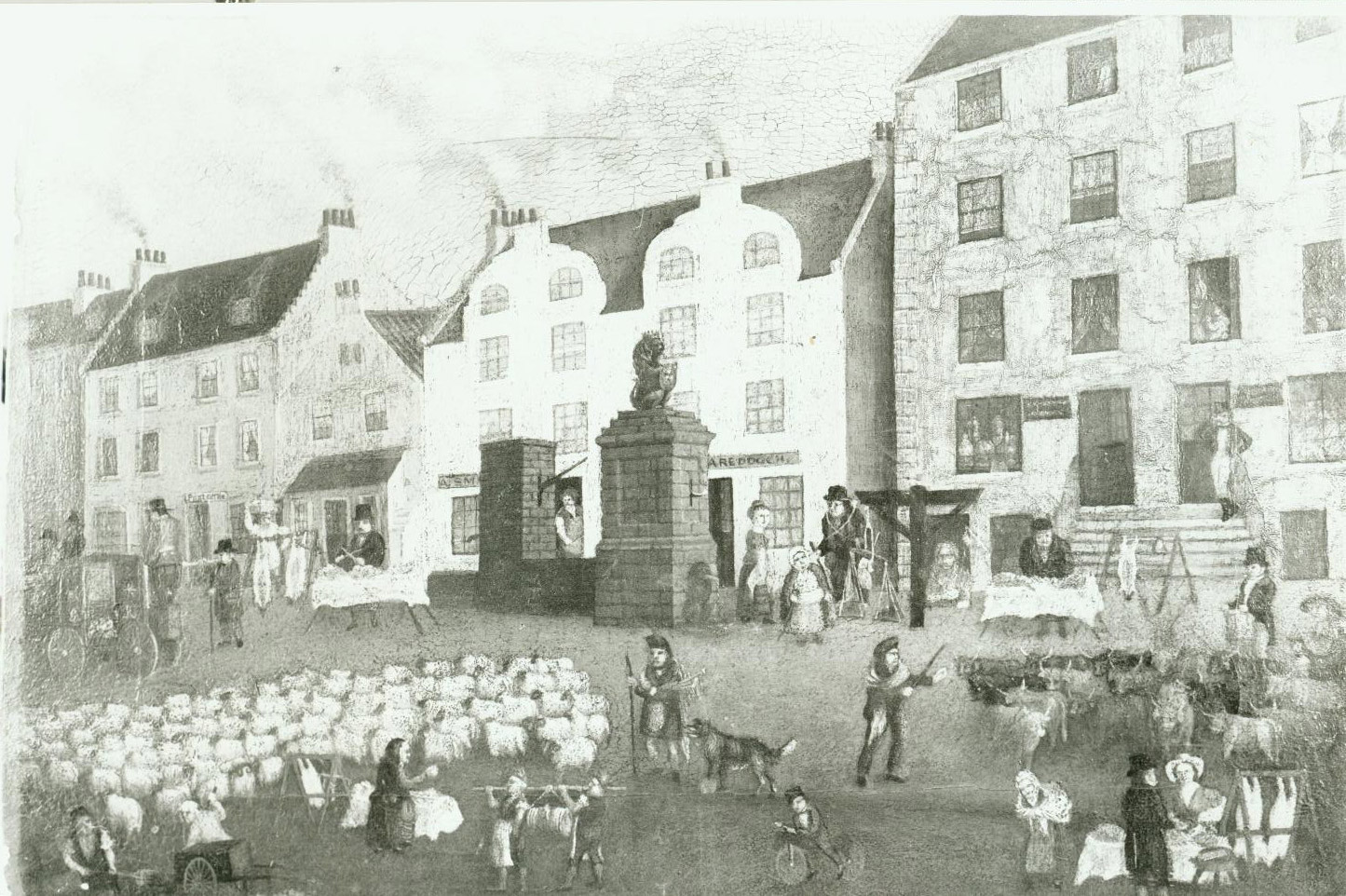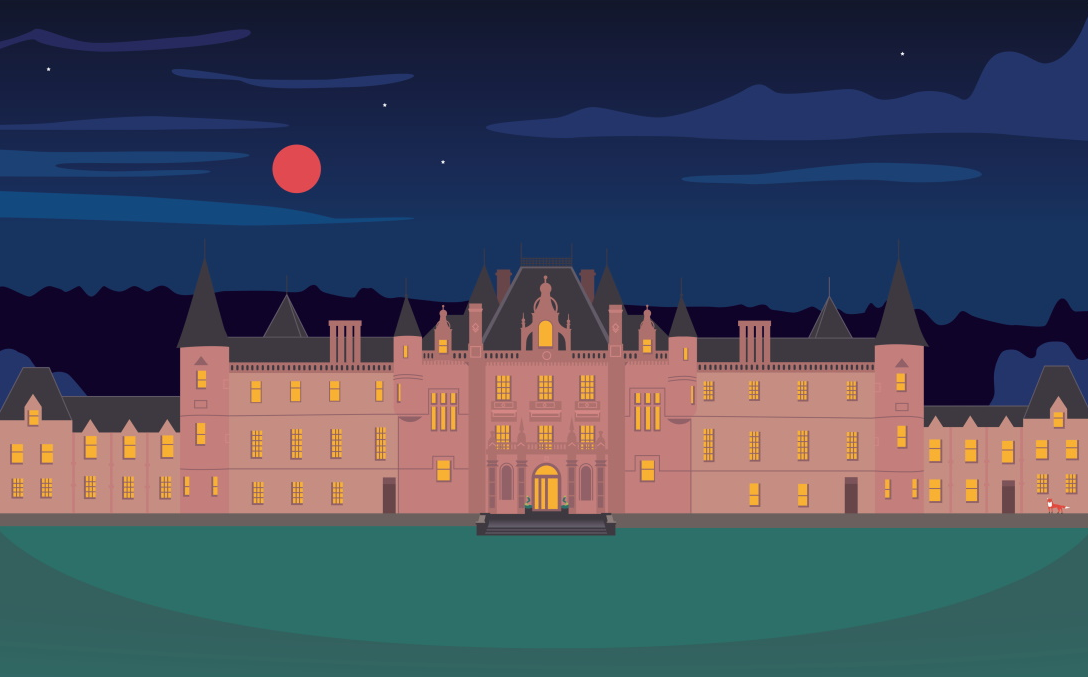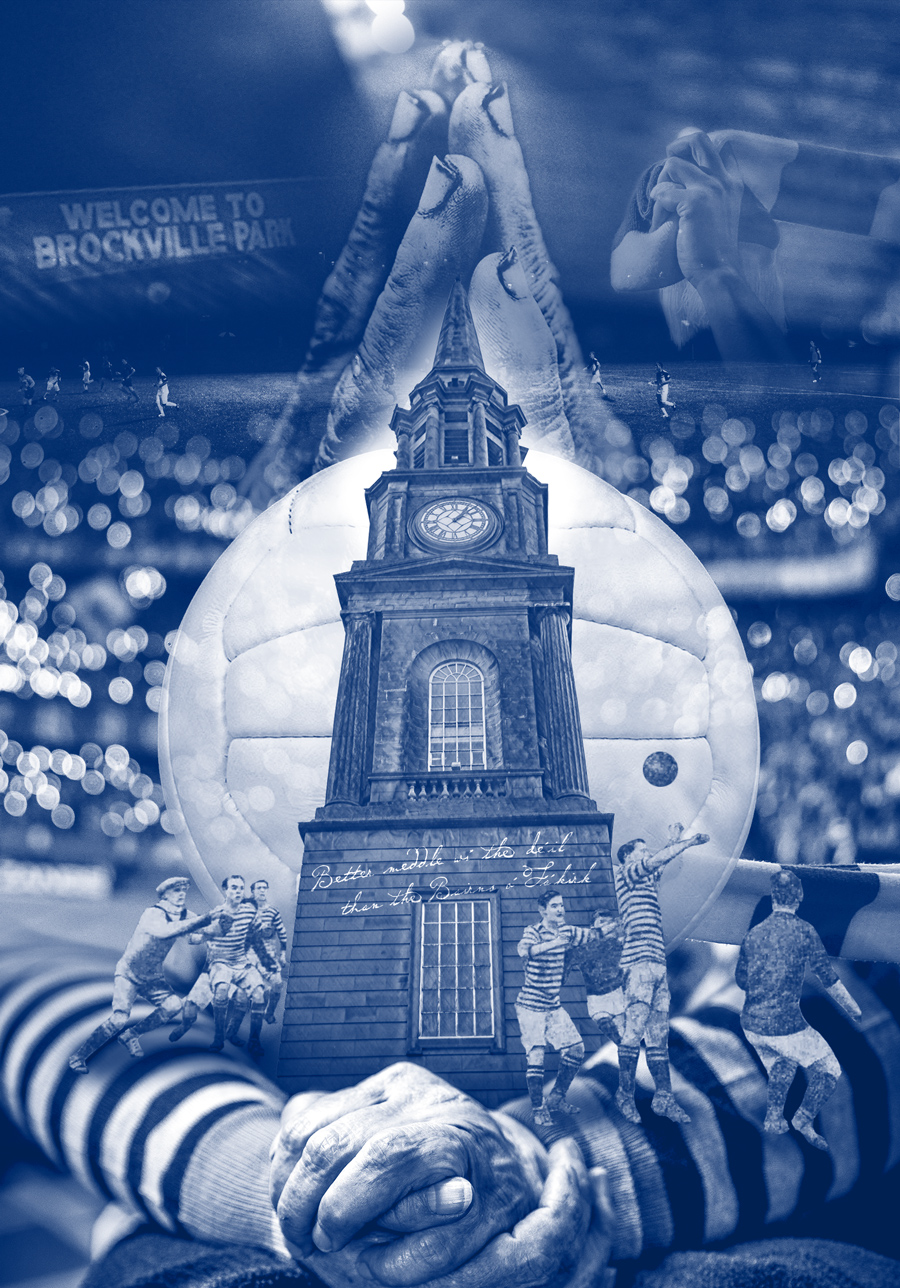The Falkirk Tryst was once the most significant, busy, and lively cattle market in Scotland. Find out about this overlooked aspect of Falkirk’s rich heritage. By 1770 Falkirk was “the greatest cattle market in Scotland” (ARB Haldane, The Drove Roads of Scotland, 1997). Every drove road in Scotland, from every corner of the Highlands and Islands, led to Falkirk.
Origins
For centuries the cattle of the highland glens had found a ready market in the lowlands. It was probably the growth in demand from England, following the union in 1707, which prompted local landowners to organise the first cattle markets which, sixty years later, would eclipse all others in Scotland. Earlier trysts had been held at Crieff, but Falkirk was closer to English markets and was a more natural meeting point, quicker and easier to reach from every corner of the Highland and Islands before cattle continued south with their new owners (Haldane, 1997).
The first Falkirk trysts were held on Reddingmuir, but by the early 1770s the enclosure of common land had forced them to move to a second location to the south-west of the town at Rough Castle. The construction of the Forth and Clyde canal created yet another obstacle for the drovers and their cattle on their southward journey and, after a brief period at Carmuirs, the sales were moved in 1785 to the site at Stenhousemuir. The big sale days were the first Tuesday of the months of August, September, and October.
A Lively Atmosphere
At their height the trysts were a sensational sight with as many as 150,000 cattle, sheep and horses arriving in great streams from all corners of Scotland and settling in the fields with their drovers, perhaps as many as two thousand of them, with ponies and dogs, sleeping in the open or in portable bivouacs. Here they met with hundreds of buyers from all over Britain. Many observers who came to marvel at the scene remarked on the bustle and clamour of the markets. Thomas Gisbourne, in his "Essay on Agriculture", described the Tryst in 1849 as a scene to which “Great Britain, perhaps even the whole world, does not afford a parallel." The dealers there stayed in a large tented village of banks, shops and taverns offering all manner of services.
The Decline of the Trysts
The arrival of the railways in the 1840s made it possible for dealers to buy “off the hill,” and for sellers to transport the stock south by rail. By then the availability of open ground en route from the hills to Falkirk was decreasing, and the fatter, carefully bred cattle were less able to take the long walk to market. The tryst continued but the numbers of livestock steadily declined until by 1900 the great markets were all but dead. All that remained, and still remains, are the annual sideshows and fair which are the direct descendants of the services and other activities which surrounded the trysts at their height.
The ground set aside for the trysts consisted of around 200 acres, and early ordnance survey maps indicate the boundaries as the Bellsdyke Road to the north, Muirhall Road to the west, Main Street to the south and, possibly, Muirhead Road on the east. In other words, all the land covered by the golf course, the cricket ground, the football park as well as fringe areas which have been lost to housing and industrial development over the last century. Other than the name ‘tryst’ for the golf course, the cricket club, and the road, there are no memorials or plaques to indicate that this is one of Scotland’s most historic sites. Apart, of course, from the annual fair and McCowan’s toffee (with its Highland cow symbol) which was made on part of the tryst ground.
By Ian Scott, Falkirk Local History Society (edited by Craig Whyte).



